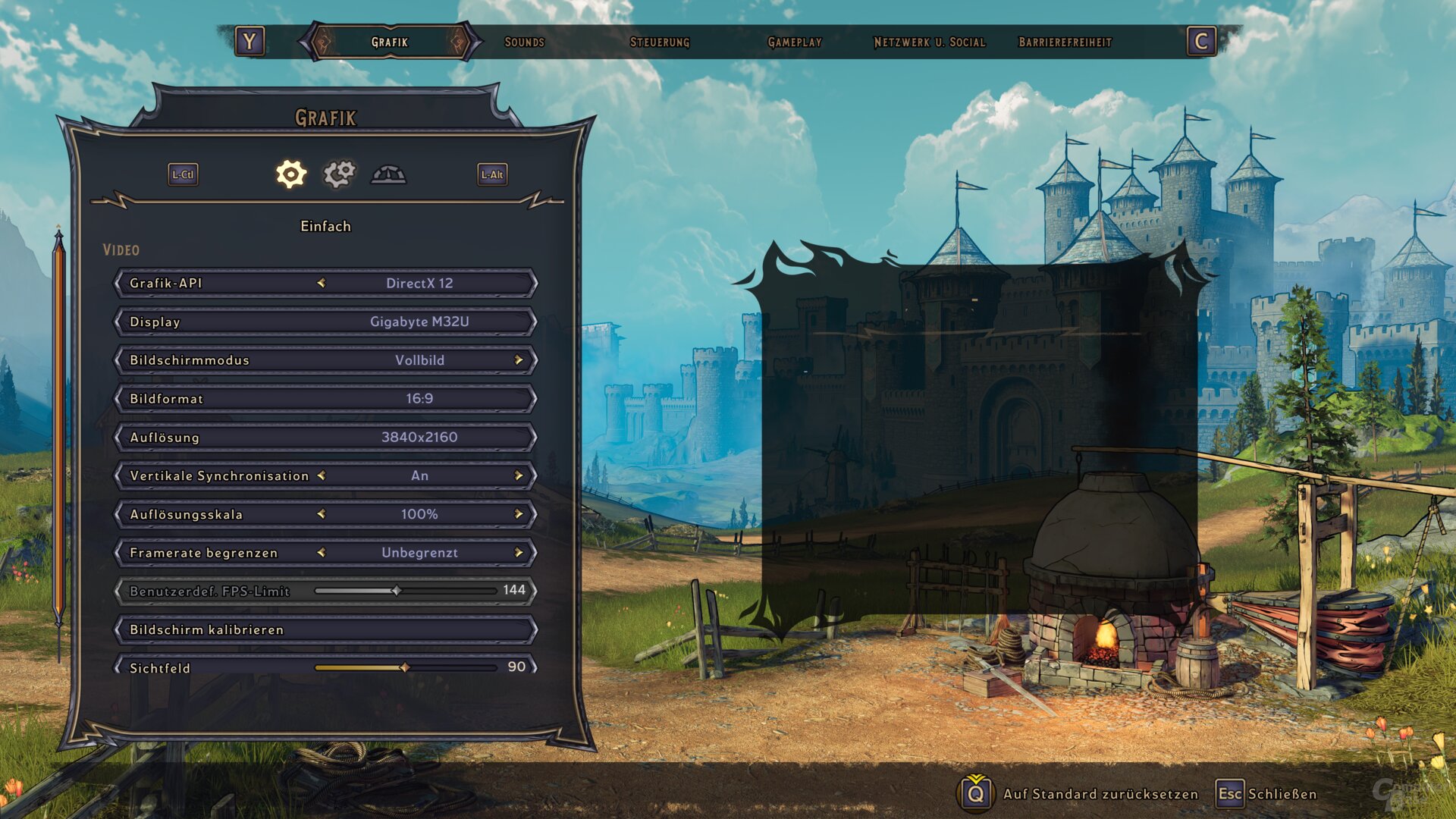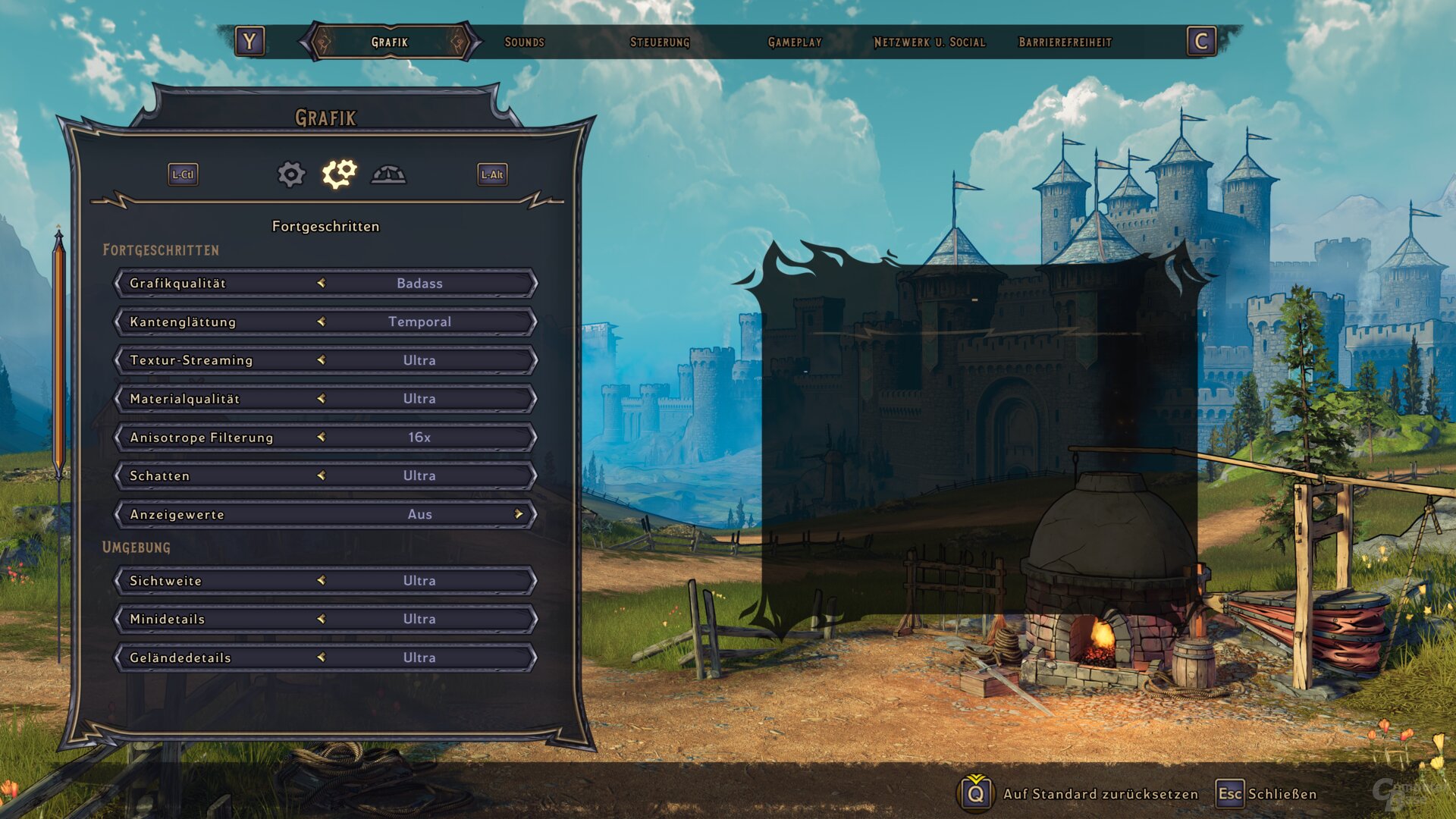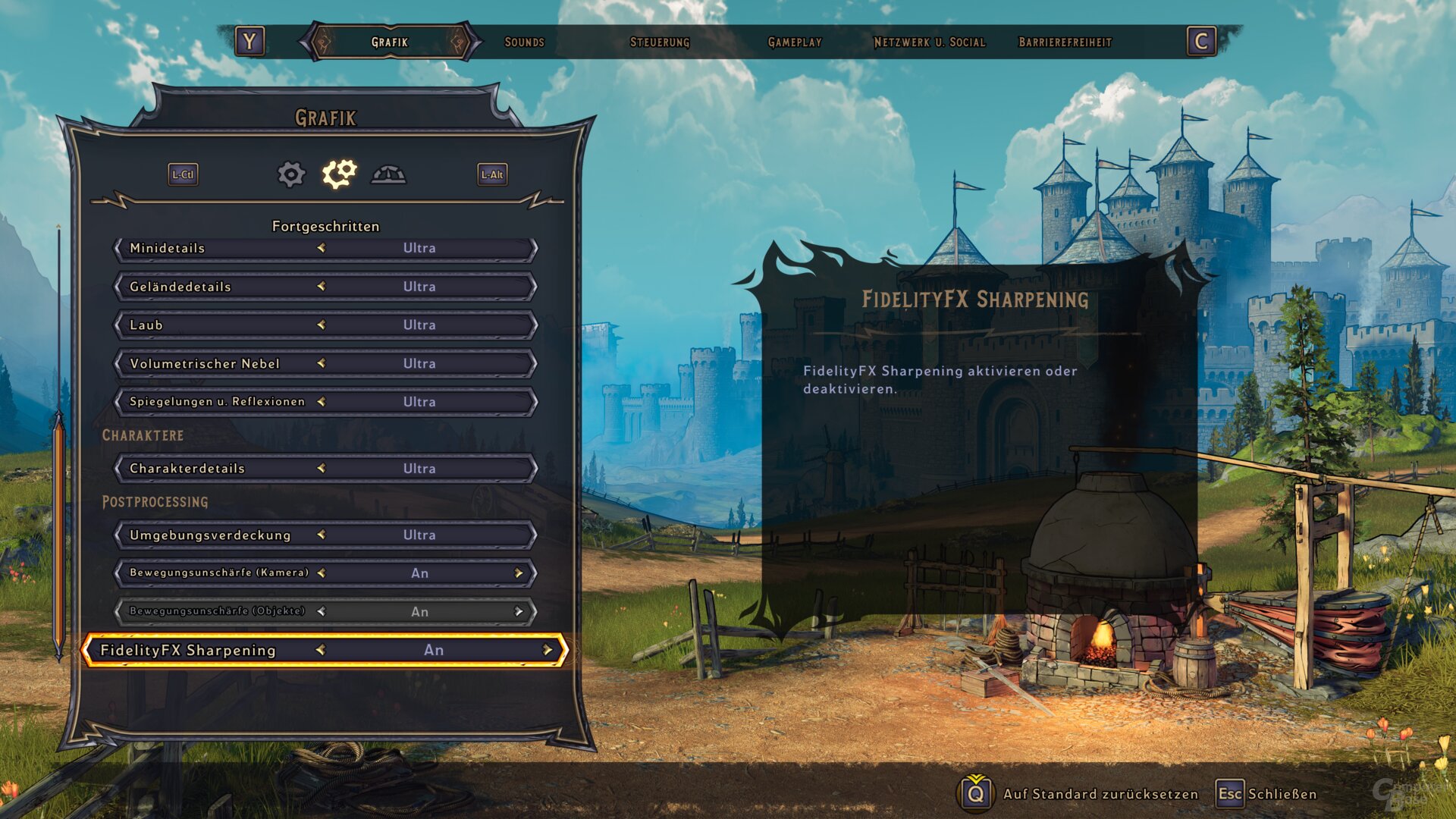Tiny Tina’s Wonderlands im Benchmark-Test
: Test |CUP | Specs |Config
With Tiny Tina’s Wonderlands, the eponymous character from the Borderlands universe gets its own spin-off. The game is a classic Borderlands with an interesting narrative scenario. The technology is based on Borderlands 3, but delivers different results than the original in the test.
Borderlands 3 (test) is not followed by Borderlands 4, but with Tiny Tina’s Wonderlands, a spin-off that focuses on the character of the same name from the Borderlands universe. And since Tiny Tina plays a D&D roleplaying game in Wonderlands, there are some narrative and gameplay twists that are a little different than the Borderlands universe.
Tiny Tina offers decent graphics
Technically, Tiny Tina’s Wonderlands takes Borderlands 3 as its skeleton, keeping the comic book style of the series while slightly improving the graphics quality. There are a few more details to see everywhere in the new title, but there are no major changes. But that’s not particularly bad, because the graphics simply fit the game.
Of course, the game could have gone a step further optically, but it’s definitely not a graphic hit. Overall, it’s still a pretty nice title, and the comic book style helps in that regard. Nevertheless, the Gearbox developers should clearly improve the graphics quality for the fourth Borderlands part.
Apart from DirectX 12 and CAS, there are hardly any features
Tiny Tina’s Wonderlands again uses Unreal Engine 4 as the graphics engine, and the primary API is DirectX 12. Alternatively, you can switch to DirectX 11 in the graphics menu. AMD’s FidelityFX CAS is used on the PC and with it a sharpness filter that can be switched on and off, but not configured more precisely. There is no ray tracing, the same applies to upscaling technologies such as AMD FSR or Nvidia DLSS.
Tiny Tina’s Wonderlands shows a good graphics menu on PC, although there is still room for improvement. In addition to the classic graphic presets and the individual options, there is an FPS limiter that can be set to 30, 60 or 120 FPS. Alternatively, frame rates that deviate from the three values can be configured in 1 FPS increments in the range between 15 and 300 FPS.
There is also in-game downsampling and upsampling, even if the render resolution can only work with the fixed values of 50, 75, 125, 150, 175 and 200 percent. A finer gradation would be helpful, especially when upscaling, since the pixel loss is already quite high even at 75 percent.
In addition, a sharpening filter can be switched on or off with AMD FidelityFX CAS, i.e. it cannot be configured more precisely. Last but not least, there is a built-in benchmark that plays a fly-by sequence. Sample screenshots of the individual options, on the other hand, are not on board and the sample descriptions are simple.
Tiny Tina’s Wonderlands graphics menu
image 1 from 4




Six game presets with greater impact
Tiny Tina’s Wonderlands offers six different graphic presets: “Very low”, “Low”, “Medium”, “High”, “Ultra” and “Badass”, whereby “Badass” also represents the maximum graphic details. Switching back to “Ultra” finds only slight differences even with the magnifying glass. With “Badass” the shadows look a little better at medium and long distances, since they lose detail slightly with “Ultra”. However, there doesn’t seem to be any other differences .
This then changes with “High”, because here larger downgrades compared to “Ultra” are noticeable. The vegetation display is literally shortened on “high” even at medium distances, which is immediately noticeable. In addition, shadows and ambient occlusion are reduced, which is hardly noticeable on some objects but looks significantly worse on others.
From the middle preset there are big savings, both vegetation and shadows are significantly reduced. It also leads to poorer anti-aliasing and a blurrier image. From the low preset on, the vegetation is largely missing, the same applies to the shadows and on top of that object details are lost. Up to and including the “High” graphic preset, the graphics in Tiny Tina’s Wonderlands can therefore be reduced with moderate optical influences. From the “Medium” level, however, too many details are lost.

Badass-Preset
image 1 from 6
Big differences between AMD and Nvidia
AMD and Nvidia graphics cards sometimes react completely differently to the graphics presets in Tiny Tina’s Wonderlands. If you turn the badass preset down to “Ultra” with a GeForce RTX 3080, you get 5 percent more FPS. On a Radeon RX 6800 XT, on the other hand, it is 10 percent. The high preset, which is still graphically decent, brings another 16 percent on the GeForce and 20 percent on the Radeon.
With the middle preset, the performance increases significantly and this also applies to the difference between the Ampere and the RDNA 2 graphics card. With medium settings, the GeForce RTX 3080 increases by 56 percent compared to “High”, while the Radeon RX 6800 XT increases by 80 percent. The Low and Very Low settings again scale better on the AMD GPU, but the differences are much smaller.
















